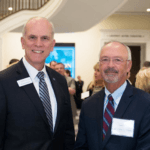
When Schultz & Williams evaluates our clients’ potential for campaign success, we look for four primary attributes, asking:
• Does the organization have a compelling case for support that will inspire donors?
• Is there a cultivated pool of prospects ready to support the campaign?
• Is there strong volunteer leadership that will enhance the staff’s efforts by bringing influence, credibility and investment to the campaign?
• Does the organization have the resources—human, technical and financial—to execute a campaign in addition to its ongoing work?
Recruiting a strong, influential and committed group of volunteer leaders is perhaps the most strategic task in the earliest stages of the campaign. A well-executed campaign planning study will help you identify the right leadership for the campaign.
But once these leaders are recruited, how do you keep them informed, energized and actively involved in the work of the campaign? I’d like to offer ten strategies that you can use, gleaned from our experience with numerous campaigns of all shapes and sizes.
1. Work collaboratively with the campaign chair to design productive meetings.
In the same way that we provide staff support for our CEO for every donor meeting, we should be providing staff support for our campaign chair—setting goals for the meeting, developing agendas, and identifying opportunities to engage the committee.
2. Ensure the active involvement of the CEO.
Campaign volunteers are contributing their valuable time and invaluable insight. They need to feel that organizational leadership is doing the same. An update from the CEO can set the stage for a productive meeting.
3. Create meetings where volunteers have a chance to contribute.
Effective committee meetings don’t center on staff reports, but rather create opportunities for volunteers to discuss campaign successes and challenges. Strive to have at least 50% of the meeting focused on committee input.
4. Encourage volunteers to tell their fundraising stories.
A great meeting will include every (or almost every) member sharing progress on their prospect assignments—reporting on successes and challenges and creating a healthy sense of competition among volunteers. Campaign staff should help them prepare for these reports.
5. Ask the committee to approve a campaign plan and policies.
Influential volunteers should be involved in key campaign policy decisions—it deepens their understanding and engagement, and the organization can benefit from their diverse experience. As examples, the committee can make a recommendation to the full Board to approve a campaign; adopt gift acceptance and recognition policies; approve naming opportunities; and advise on campaign communications.
6. Recognize that the real work of the committee happens outside of the meetings.
If we want volunteers to be actively involved in a campaign, we must provide them with the staff support they need to succeed in their in cultivation and solicitation activities. Staff builds the strategies and structures that will make volunteers successful.
7. Give them an insider’s view of the campaign’s impact.
Whether it’s a presentation by the architect, a conversation with a curator, or a client testimonial, think of ways that your volunteers can experience the tangible impact of philanthropy. Such experiences will motivate them and make them better ambassadors and solicitors.
8. Ask volunteers to evaluate their own educational needs and design trainings to meet those needs.
In the earliest phases of a campaign, volunteers often express the need to practice the campaign “elevator speech,” or to walk through a simulated solicitation. As professional staff, we can provide that training or seek outside expertise to do so.
9. Help the committee to understand philanthropic trends in your sector, region or constituency.
Philanthropy is an important part of the lives of our volunteers, and they are eager to understand the “megatrends” that are shaping the philanthropic market. This information is value added for them.
10. Be open to adding new members.
As you expand campaign outreach and solicit new gifts, you are likely to meet donors who could bring value to your leadership committee. Define ongoing leadership opportunities and continue to recruit during the campaign.
As development professionals, we could not do the work we do without the inspiring volunteer leaders who give so generously of their time, treasure and talent to our organizations. Establishing an effective partnership that leverages their unique gifts and maximizes their productivity is an essential element of successful campaigns.




